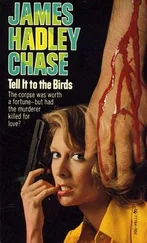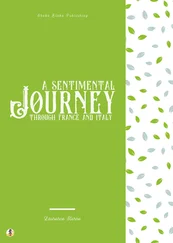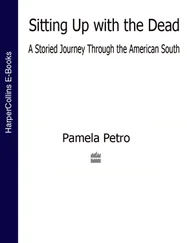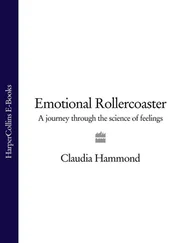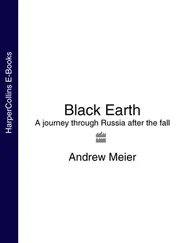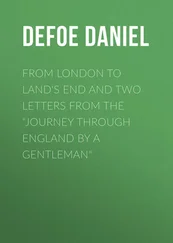In 1958, Ronnie Simison, a farmer from South Ronaldsay, was walking over his land looking for stone to quarry for use as fence posts. He walked along the sea cliffs at the eastern edge of his farm. Below him fulmars were nesting on sandstone ledges, a seal was berthing in Ham Geo, curlews moved amongst marsh orchids and eyebright. Perhaps it was the pink splash of sea thrift that caught his eye and drew him to the arrangement of stones the weather had recently exposed, a grassy mound peeled back to reveal a sneak of wall. A spade was fetched and Simison began to dig down beside the wall. As he dug the stones spilt things about his feet as if his spade had disturbed a crèche of voles. He picked each object up and laid it out beside him on the grass: a limestone knife; a stone axe head; a black bead, polished and shiny, that stared back at him like an eye. Then his spade had found an opening and darkness was spilling out of a doorway like oil. He fumbled in his pockets and pulled out a cigarette lighter, stretched his arm into the darkness and flicked the lighter’s wheel. The bronze shapes he saw flickering back at him must have made him nearly drop the lighter. Certainly, the story goes, Simison ran the mile back across the swaying grassland to his home where, breathless and sweating, he picked up the telephone and called the police.
Inside the tomb I can hear a curlew trilling above the heath. I crawl back down along the tunnel and out into the bright sea glare. My trousers are covered in dust from sitting on the cell’s floor and, as I walk along the cliffs, it looks like my legs are smoking as the breeze cleans the dust from my clothes.
The darkness Ronnie Simison’s spade had cut loose from the mound that summer’s evening was 5,000 years old. The mound was a Neolithic chambered cairn, and staring back at Simison when he sparked his lighter into the dark hole was a shelf of human skulls, resinous in the flickering light. There might have been a second or two when Simison mistook the bones’ bronzed colours for a cache of treasure before he realised what they were, grabbed his spade, and ran.
When the tomb came to be excavated, amongst the human bones it was discovered that there were many bones and talons belonging to white-tailed sea eagles. In all, seventy sea-eagle talons were found and, in some instances, the birds’ talons had been placed beside the bones of human individuals (one person had been buried with fifteen talons and the bones of two sea eagles). It is estimated that there were thirty-five skeletons of birds of prey in the tomb and of these two-thirds belonged to sea eagles.
The sea eagle was clearly a bird of totemic significance for the people living in that part of Orkney at that time. Presumably the bird performed some sort of funerary or shamanistic role for the community, perhaps in accompanying the dead on their journey to the afterlife, perhaps in assisting shamans in their magico-religious ceremonies. The importance of birds in shamanistic rituals is well known and there are archaeological examples from different cultures around the world of birds being involved in ceremonial and mortuary practices. In Alaska archaeologists unearthed a grave from a proto-Eskimo settlement at Ipiutak in which an adult and a child had been interred alongside, amongst other artefacts, the head of a loon (a species of diver). Strikingly, the diver’s skull had lifelike artificial eyes (carved ivory for the white of the eye inlaid with jet for the black pupils) placed in its eye sockets. It’s possible these ivory eyes served as a prophylactic to ward against evil (some human skulls from the settlement also contained artificial eyes). Equally, the eyes may have been placed in the diver in recognition of the belief amongst circumpolar peoples that the loon, a totemic bird for these cultures, was a bird with the power to both restore sight and also assist shamans with seeing into – and travelling through – different worlds.
In the museum a mile from the tomb some of the skulls have been given names: ‘Jock Tamson’, ‘Granny’, ‘Charlie-Girl’. Beside the skulls there were pieces of pottery, fragments of bowl decorated by the imprint of human fingernails. The nails had scratched the wet clay and left a pattern like a wavy barcode around the bowl’s rim. I picked some of the sea-eagle talons out of their case and held them in my palm, running my fingers over their blunted points. They were smooth to touch, like polished marble, their creamy colours flecked with rust.
The human bones, in contrast to the eagle and other animal bones in the cairn, were found to be in poor condition, noticeably bleached and weathered. This weathering suggests that the human dead were excarnated, given ‘sky burials’, their bodies exposed to the elements on raised platforms to be cleaned by natural decay and carrion feeders like the sea eagle. Besides the eagle bones, which were by far the most numerous, there were also bones of other carrion-feeding birds inside the tomb: two greater black-backed gulls, two rooks or crows and one raven. Once the excarnation process had been completed, the human skeletons – their bones scattered by carrion birds and bleached by the sun – would have been gathered up and interred inside the tomb.
That the sea eagles were involved in the excarnation of the human dead on Orkney is almost certain given that the bird is such a prodigious carrion feeder. Excarnation: the separation (of the soul) from the body at death, the opposite of incarnation, where the soul or spirit is clothed, embodied in flesh. Excarnation is not just a method for disposing the dead (to excarnate means to remove the flesh). It was also, for some societies, the process by which the spirit or soul could be released from the flesh. Tibetan Buddhists believed that the vultures summoned to a sky burial were spirits of the netherworld come to assist the soul on its journey to its next incarnation. In parts of the Western Highlands of Scotland it was unlucky to kill seagulls because it was believed the birds housed the souls of the dead. For what better, more natural place to rehome the soul – the restless, fidgety soul – than a bird, whose shape and movement, whose own restless flight, could be said to resemble the soul? Perhaps the Neolithic peoples of Orkney believed something similar, that when sea eagles, this great totemic bird, cleaned the bodies of their dead, the person’s spirit, which after death still lived on inside the flesh, was taken in by the eagle. The spirit or soul transmigrated to the bird, lived on inside the bird. Human and eagle fusing – literally, ceremonially – each one inhabiting the other.
Конец ознакомительного фрагмента.
Текст предоставлен ООО «ЛитРес».
Прочитайте эту книгу целиком, купив полную легальную версию на ЛитРес.
Безопасно оплатить книгу можно банковской картой Visa, MasterCard, Maestro, со счета мобильного телефона, с платежного терминала, в салоне МТС или Связной, через PayPal, WebMoney, Яндекс.Деньги, QIWI Кошелек, бонусными картами или другим удобным Вам способом.


